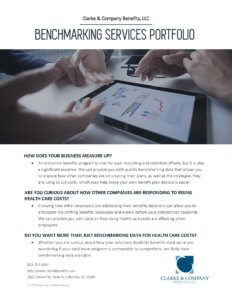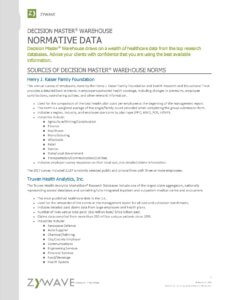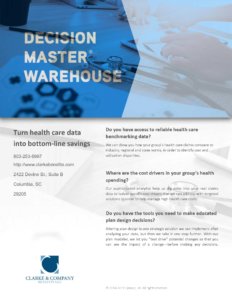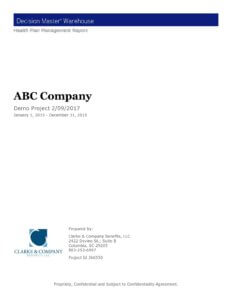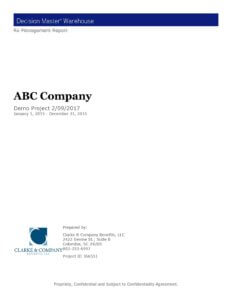Data Analysis, Reporting, and Tools
Clarke & Company has a fully integrated data analytics tool, Decision Master Warehouse, which allows us to produce a health plan and pharmacy management report package to our clients. Our data analytics tool is fully integrated with BCBS of SC including the ability to run additional ad hoc reports as needed. Our data analytics tool has the ability to compare our client’s data to similar industries by region. Each time the report is prepared, the client will receive a “Summary of Findings” that can be discussed with our staff.
Our tool offers benchmarking to a 19.6 million life database. We are able to dig deeper into claims data that is running higher than norms by using ad hoc reporting. We can explore solutions based on disease, utilization, facility, and services. All of this allows Clarke & Company to implement solutions and “test-drive” plan design changes so that you can see the impact before making any decisions. Even if you switch carriers, your prior data remains in our system.
DMW will give a management report. You can explore data comparison, such as the following items:
- Total health plan costs
- Inpatient and outpatient claims
- Emergency room and office visit utilization and costs
- Claims by major diagnostic categories
- Wellness
The reporting also covers prescription drug analysis to help us assess whether your costs are appropriate and where problem areas may exist. The following factors are among the categories analyzed.
- Paid summary
- Total member cost share
- Mail service utilization
- Brand name versus generic utilization
Our ad hoc analysis reporting feature allows us to get to the problem areas quickly. We offer customized reporting to discover areas of opportunity to help you reduce benefit plan costs. Find health and prescription plan answers, such as the following:
- What diagnoses do my high-cost claimants fall under? What other diagnoses and comorbidities are they affected by?
- Where are the most cost-effective places to go for specific procedures? How much would we save by educating our employees on lower cost facilities with high qualify ratings?
- How often are generics being utilized when available?
What strategy does your firm use to manage and forecast a benefit package over a 2-3 year period?
Expand
The best way to forecast the future is by using past data. Using DMW, we can look at two ways to control costs. The first is by plan design, making plan changes designed to alter certain behaviors, either health or service. Plan design could incent the use of maintenance medications and drive urgent care utilization for non-emergency procedures away from the ER. The second way to impact costs is through education: Finding out what our major cost drivers are and utilizing an educational campaign on these disease for our employees.
When developing a long-term benefits strategy with your group, we would review all plan elements and give consideration to national trends in your industry. The following steps would be taken in order to reach the goals established in our strategic meeting:
- Surveying employees on the benefits to get feedback on the benefit package currently offered
- Continuing to improve how employees are using the core benefits and educate them on consumerism
- Modeling future plan design changes to keep your benefits competitive and achieve cost control
- Considering the funding platform for the medical plan (after an extensive claims review)
- Considering the pharmacy formulary being used in conjunction with the medical plan
- Educating the population on the tax advantage of the Health Savings Account and the Flexible Spending Account
